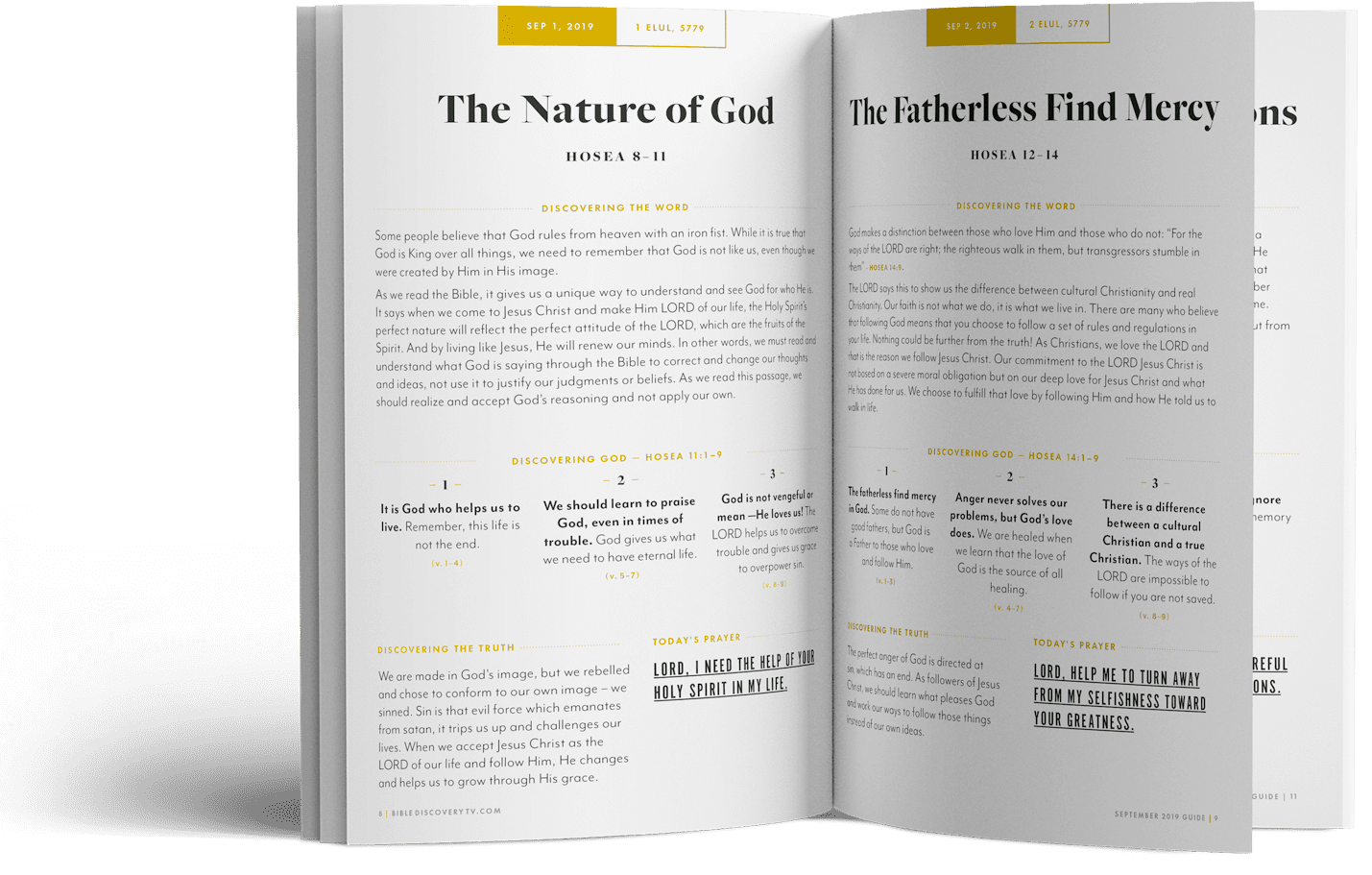In my last article, A One-Legged Snake, I wrote about what the serpentine curse of Genesis 3 was not about. I argued against the interpretation that the primary meaning of the curse was about the prelapsarian snake species having legs and vocal cords and consequentially lost those anatomical features because of its participation in deceiving mankind. In this entry, I hope to show what it is about. That the intended recipient of the two-verse curse was primarily directed toward Satan, and secondarily about snakes either as a symbolic reminder or rhetorical device, meaning that either (a) the curse bestowed upon Satan was subsequently applied to the snake as a symbolic reminder to us of Satan’s fall but not a direct curse of snake-kind per se, or (b) the narrative was drawing parallelism between snake behaviour, creaturely rank, anatomy, locomotion, and dietary habits with Satan’s irredeemable fall and new spiritual nature as humanity’s chief adversary. Meaning, the subtle nod to snake biology is deliberately emblematic and dimly symbolic of Satan being cast down from his heavenly status to eat dust, the image bearers of God.
Regarding the Edenic serpent, then, we are left with three options: (a) possession, (b) assumption, or (c) concealment. In other words, Satan either entered and possessed a snake, assumed the form of a snake, or was already a snake but concealed his full form. This last option has fallen through the cracks of theological history but has gained traction in recent years and may very well be the bridge between Alexandrian and Antiochian schools of thought, given that Satan is visually described as a great serpentine dragon (Rev.12:9,20:2; Is.27:1) and also anthropomorphized as “walking” (hālaḵ) to and fro in Job 1:7, 2:2. Genesis teaching a literal concealment is a stronger version of Origen’s assumption argument without grasping or synchronizing concepts from other religions, say, its Greek counterpart (i.e., Zeus shapeshifting into a goose). Scripture depicts numerous celestial hybrid beings, such as cherubim and seraphim, with guardian cherubs even possessing and resembling human features like faces and hands (Ezekiel 1:5-14; Isaiah 6:1-6). Satan as a celestial serpentine dragon-man and guardian cherub correlates well with the biblical data, from the first cherub mentioned in Eden to later accounts of fallen heavenly beings (Genesis 3:24; Ezekiel 28:12-17), without morphing his physiology before or after the Fall. It’s simple, yet insightful.
For this reason, and for reasons I will get into in just a moment, a literal and literary concealment seems to be the proper interpretation of Genesis 3, but not at the complete exclusion of possession––both could be true. Concealment is simply the primary focus of the passage by default, not because possession is wrong or implausible but because concealment is the strongest, immediate implication of the curse when Satan is the direct recipient of verses 14 and 15. One simple typological parallel in favour of possession is that Satan entered and possessed a snake just as Satan entered and possessed Judas (Luke 22:3, John 13:27). Besides that, there is not much more to go on biblically. Possession could very well be symptomatic of the Fall, insofar that Genesis 3 was stylistically written by Moses, through the Spirit, to achieve thematic unity between historical narrative and dimly lit prophecy for the greatest spiritual impact, “to make you wise for salvation” (2 Tim.3:15; 1 Cor.13:12). So––let’s examine the key passages and breakdown my proposal verse-by-verse.

Genesis 3:1 – A Serpentine Dragon
“Now the serpent was more crafty than any other beast of the field that the Lord God had made.” The Hebrew word for serpent, here, is nāḥāš. It is the same word used in Exodus 4:3 when God instructs Moses to throw his staff on the ground so that it would transform into a serpent. But this word nahas does not translate 1:1 into ‘ordinary snake’. In fact, when God instructs Aaron to throw Moses’ staff on the ground against Pharaoh’s two magicians, Jannes and Jambres, the text clarifies that the serpent did not turn into an ordinary snake, it turned into a tannîn, meaning “dragon” (Exodus 7:8-10). God first said the staff would transform into a nahas (4:3), then He said the staff would transform into a tannin (7:9). Jannes and Jambres also throw down two tannins, but Moses’ dragon swallowed the other two whole (v.12). Immediately after this, God instructs Moses to meet Pharaoh on the bank of the Nile River, and to “take in your hand the staff that turned into a nahas” (7:15). The word nahas and the word tannin are interchangeable in this context––serpent and dragon are synonyms. We see this again when tannin is used in conjunction with peṯen (often translated “asp” or “adder”), it connotes “serpent” or “serpentine” (Deut.32:33; Ps.91:13). Tannin seems to primarily denote ‘serpentine dragon’.
Most notable for our discussion is in Genesis 1, when “God created the great sea creatures” (v.21; cf. Jb.7:12, Ps.148:7). The translation of the phrase “great sea creatures” is tannin, which later in the text refers to sea dragons such as Leviathan (Psalm 74:13-14; Isaiah 27:1; cf. Ps.104:26; Jb.3:8, 41:1) and Rahab (Isaiah 51:9; cf. Jb.9:13, 26:12; Ps.89:10). The sea and waters of the deep are ancient Near Eastern and Scriptural symbols of death, chaos, and the abyss (Rv.20:13,21:1; cf. 1 Pt.3:18-22; Rm.6:3-4)[1]. That is why Leviathan and Rahab frequently represent chaos monsters and demonic strongholds and even Satan throughout Scripture[2].
Another word that is interchangeable with nahas is śārāp̄. Seraph is first used in the bronze serpent account (Numbers 21:4-9), when Israel’s impertinence strikes against God and Moses (nothing new here) and the Lord sends “fiery serpents” (nahas seraph) against the rebellion (v.6). Many die and they repent, asking Moses to intercede on their behalf before God to rid the nahas. No, his staff did not turn into a flute or Bachal Isu, rather God instructs Moses to forge a bronze seraph (v.8), so that anyone who looks upon it will live. The word seraph primarily means “fiery” but it also denotes “serpent” especially when used in conjunction with nahas or ṣep̄aʿ (meaning “venomous snake”, often translated as “viper” or “adder”[3]) and can be used interchangeably with such synonyms as seen in Numbers 21:8 as well as in Isaiah 14:29 and 30:6. Furthermore, the plural form seraphim is used to describe angelic ‘fiery ones’ flying before the throne of God in Isaiah 6:2-4, which parallels the phrase “flying fiery serpent” (Is.14:29; 30:6). One need not stretch their wingspan too far to see that a flying fiery serpent is, indeed, a dragon.
In short, the Hebrew word we translate as serpent in English does not denote or connote an ordinary snake necessarily: nahas, tannin, and seraph are contextually interchangeable and conceptually fluid, with no speciation or taxanomic ranks implied, and can refer to ordinary snakes like vipers and great flying serpents and sea dragons like Leviathan as well as celestial serpentine beings like seraphim and, presumably, Satan––the great celestial serpentine dragon-man who deceives the world (Rv.12:9,20:2).
Furthermore, the Hebrew implies that the serpent is a celestial creature. Biblical Hebrew contains only consonants. Therefore, in order to preserve the traditional pronunciation of the original Hebrew, there were diacritical marks, or niqqud, added to the Masoretic manuscripts to indicate vowels and other phonetic vocalizations. This system was called “pointing”. The word ‘serpent’ ( נחשׁ ) in Genesis 3:1 “contains three consonants that can be pointed to be read as the adjective ‘shining’ or the verb ‘to divine’; but the context of Genesis 3:1 indicates that a serpent is being referenced and נחשׁ has been pointed this way in the Hebrew Masoretic Text that most English Bibles use.”[4] In other words, ancient Hebrew listeners would hear the wordplay; the Hebrew hints that the serpent was a celestial being without overstating the fact.
Verse 1a, then, is parallelism (or double entendre if possession is true): the word ʿārûm, often translated as “crafty” or “sly” is anthropomorphism, rhetorically referring to the subtle, shifty movement behaviour of a predatorial snake in order to draw a parallel to the serpent possessing secret wisdom, hinting that this serpent appears ordinary like any other “beast of the field” but is not. In terms of raw storytelling, then, verse 1a deliberately keeps the serpent’s true identity and intentions a secret for greater impact: when the climax of God judgment comes. The brevity of verse 1a best cloaks this imperative, forcing the reader to speculate about the nature of this serpent’s wisdom (as ancient symbols of wisdom, Mt.10:16) as well as the nature and spiritual state of prelapsarian animals in general (given that it speaks)[5]. Verse 1b, then, forwards the serpent’s deceptive intentions to deceive humanity, “Did God really say”, which gradually reveals his true intentions (vv.1b-13) but maintains parallelism until verse 14. Cloaking the serpent’s identity in parallelism until verse 15 preserves for us, the readers, the same illusive experience Adam and Eve underwent, keeping the moral impact for the Genesis story intact, which is vitally relevant and spiritually integral for us to know––Satan will continue to threaten our lives in the same way he did in Eden, so beware of hidden deception and secret wisdom; Satan and his demonic offspring will “secretly bring in destructive heresies” (2 Peter 2:1; Genesis 3:15a; John 8:44; Matthew 12:34-35). Genesis is retold in the way it was received. That the serpent was not an ordinary prelapsarian talking snake is finally settled in verse 15––the serpent was a heavenly creature all along cloaked as a mere snake in the grass. Verse 24, then, seals the deal when it mentions a guardian cherub blocked the pathway to the Tree of Life. Angelic beings were present and visible all along.
Genesis 3:14 – Meaning of the Curse
“Because you have done this, cursed are you…” The Hebrew word translated “you” is the singular atá, rather than the plural form of atém (indicating “yous” or “y’all”). The plural is what would be grammatically required to reference both the snake and Satan at the same time, if I’m not mistaken. God is speaking to one person, here. Given that the snake does not possess a rational soul, the stronger case is toward the main correspondent to Adam and Eve: Satan. “Because you, Satan, have done this, cursed are you above all livestock and above all beasts of the field; on your belly you shall go, and dust you shall eat all the days of your life.”
Now let’s apply pressure to the very first words that the Lord God said to the serpent, “Because you have done this”. Is God just referring to Satan’s verbal deception, or is God referring to the entirety of Satan’s deception? You would be hard-pressed to find a theologian who thinks it should only be a partial judgment. But if we isolate “you have done this” to just be referring to the words Satan used to deceive mankind, then the curse is only a partial judgment and cannot refer to his possession or assumption or concealment. In other words, if “Because you have done this” only applies to the snake, then Satan is not being cursed or judged for his possession of the snake, only the snake is being judged. Satan is off the hook for possessing a snake before sin entered the world.
But if “you have done this” applies to the entirety of Satan’s deception, from deceiving man to disobey God to concealing his true nature, identity, and intentions (or possessing a snake), then verse 14 pertains to his possession or concealment and, thus, makes much more sense: “cursed are you above all livestock and above all beasts of the field.” It is divine irony. Satan forsake one of the highest positions in the heavenly realm to be worse off than the very animal he imitated (or possessed).
“…cursed are you above all livestock and above all beasts of the field.” In what way is Satan cursed more than “all livestock” and “all beasts of the field”? To that end we should first ask in what way is the animal kingdom cursed less than the serpent? The juxtaposition in verse 14 is that the serpent is cursed “above” all livestock and “above” all beasts of the field, which implies that the livestock and beasts are cursed, too. The earth is cursed and subjected to futility when God pronounced Adam’s consequence, whose name means “ground” (ăḏāmâ in Hebrew), “cursed is the ground because of you; in pain you shall eat of it all the days of your life; thorns and thistles it shall bring forth for you; and you shall eat the plants of the field.” (vv.17-18) All creation is cursed to futility (Rm.8:20-23). Satan, then, is now subjected to a worse curse than all creation––a hopeless futility: irredeemable, vindictive, and devoid of glory. Again, it is divine irony: He was there in the very beginning (Job 38:4-7). He saw God make all creatures days prior. As one of the highest creatures of the angelic order, he was now cast down below all creatures that were made. Cursed lower than all land animals, wild and domestic, worms and maggots; cursed lower than the sacrificial animals, the livestock, that God looks upon with compassion (Jonah 4:11)[6]. Satan is of lesser value than the very sacrifices burned for symbolic redemption (Gen.4:4; Heb.10:4-10). His fate is to be burned in the lake of fire without redemption. Therefore, the Edenic serpent can rightly be compared to a beast of the field or livestock since he was a heavenly creature concealing his fiery self to appear as a mere animal (vv.1,14).
“…on your belly you shall go, and dust you shall eat all the days of your life.” The second part of verse 14 is parallelism, again (or double entendre if possession is true): it is rhetorically referring to the anatomical, locomotive, and dietary habits of a snake slithering on its belly and swallowing up dust in order to draw a prophetic parallel to Satan’s new purpose, nature, and role having fallen from his high heavenly position––his insatiable appetite for the death of human soul. The pictorial image is a celestial serpent losing his wings and being cast down to the ground, destined to be crushed by the heel of man (v.15). As Satan twisted mankind’s understanding of God’s command to eat what ought not be eaten (Gen.2:17), so too will Satan be forever twisted to eat what ought not be eaten: vivid divine irony[7]. Consider it; Satan is “going to and fro on the earth” (Job 1:7), that is the ground (adama), and “prowls around like a roaring lion, seeking someone to devour” (1 Peter 5:8-9), that is his belly. Devouring what? According to God, dust. But what does God say to Adam immediately after he falls? “For you are dust, and to dust you shall return” (Gen.3:19). Satan was cursed in Genesis 3 to be a devourer of man, to live under us (to nip our heels, so to speak, v.15), and lead us to death through sin. We see this immediately in the falling action of the subnarrative when God warns Cain that “sin is crouching [or lying down] at the door. Its desire is for you, but you must rule over it” (Gen.4:7). The Hebrew word translated “desire” is tᵊšûqâ (tesuqa) and connotes “sexual intimacy” as well as a “bestial longing to devour”(cf.Gen.3:16; Sng7:10-11). That is, Satan entices us to sin, and sin leads to death. The New Testament also verifies this understanding:
“Since therefore the children share in flesh and blood, he himself [Christ] likewise partook of the same things, that through death he might destroy the one who has the power of death, that is, the devil, and deliver all those who through fear of death were subject to lifelong slavery.” (Hebrews 2:14-15)
Satan has the power of death (Job 2:6; Isaiah 14:12-15). Therefore, verse 14 is describing Satan’s new purpose, nature, and role as an agent of physical and spiritual death; cursed to be a bottomless pit of desire, seeking men to devour from the inside out (Rev.12:4). He now lives without inner restraint. He cannot help himself (cf. 2 Thess. 2:6-7). He’s a glutton for punishment, in the truest sense. With a belly that can never be filled nor satisfied, he wanders to and fro incessant and ravenous, lusting and consuming the souls of men as a sacrifice to himself, yet he himself is forever lower than the very fodder used for sacrifice (3:14).
For this reason, Christ came to earth, to crush the head of the serpent and free us from the coils of Satan––to destroy the works of the devil and swallow up death forever (Genesis 3:15; 1 John 3:8; Isaiah 25:8; 1 Cor.15:54). That is why we spiritually equip ourselves for battle daily against the passions of the flesh, the rhetoric of the world, and demonic corrosion––and it’s all represented right here in Genesis 3. The entire curse makes much more thematic and narratival and typological sense when it is referring to Satan as a fallen angel, from “messenger” to “accuser”[8]. Ezekiel describes a striking similar, if not, the same fall from glory to ground-dweller:
“You were the signet of perfection, full of wisdom and perfect in beauty. You were in Eden, the garden of God….You were an anointed guardian cherub. I placed you; you were on the holy mountain of God…Your heart was proud because of your beauty; you corrupted your wisdom for the sake of your splendor. I cast you to the ground…” (Ezekiel 28:12-17)
Ezekiel’s vision parallels Jesus’ vision, “I saw Satan fall like lightning from heaven.” (v.18; Luke 10:17-19) Jesus’ account also corresponds well with Revelation 12:9, which describes Jesus incarnation and ascension (v.5) that leads to a great heavenly war and victory against Satan (v.8), “So the great dragon was cast out, that serpent of old, called the Devil and Satan, who deceives the whole world; he was cast to the earth, and his angels were cast out with him.” (v.9) But these three instances need not be the exact same event, even though both describe Satan being cast down to the ground from heaven. Satan being cast to the ground draws a parallel between the first Adam and the second Adam, the latter of which will cast him to the lake of fire at the end of all things (Rev.20:10). Therefore, the casting down language merely points to a change and lowering of Satan’s celestial purpose and role, not his physiological placement necessarily (Satan is still a spiritual creature, after all). Satan’s influence in the heavenly realm is no more; he no longer accuses us before the Lord (v.10), like he did in the book of Job 1–2. Rather than accuse us before God, he now accuses us to our face. We are his direct adversary, not God (Eph.6:16). Jesus was sent to restore mankind to its Edenic state, hence why Christ’s historical victory gives the Church “the authority to trample on serpents and scorpions, and over all the power of the enemy, and nothing shall by any means hurt you.” (Luke 10:19) A heavenly army trampling over demonic forces parallels our crushing of the serpent’s head in Romans 16:20, which is also a direct reference to the serpent’s curse.
“I will put enmity between you and the woman, and between your offspring and her offspring; he shall bruise your head, and you shall bruise his heel.” This verse is less controversial, because it is unanimously seen as a direct curse against Satan and his spiritual offspring––false prophets and broods of vipers (John 8:44; Matthew 12:34-35; 2 Peter 2:1)––so I will not dig too deep into it today. But one aspect often overlooked is the kind of spiritual war implied by the offspring on both sides. Satan is against the image bearers of Christ. Christ is the second Adam, and the Church is the second Eve made from the unbroken side of Christ––the two are one flesh (Eph.5:28-33; 1 Cor.6:16-17). As God’s adopted offspring through the Promises of Abraham, Satan also has adopted offspring that he works enmity through against God’s people. This prophesy of Christ, “he shall bruise your head, and you shall bruise his heel” is also a direct reference to Christ working in and through us, which is “her offspring”. Paul clarifies this understanding when he says “The God of peace will soon crush Satan under your feet.” (Romans 16:20) Spiritual warfare is not just spiritual in and of itself––it manifests visibly in and through our neighbours and friends. This directly correlates with the telos of Scripture––its overarching thematic purpose.
Conclusion
For these reasons, a literal and literary concealment is the strongest interpretation of Genesis 3, but not at the exclusion of possession necessarily––again, both could and can be true. Concealment is simply the primary focus of the passage by default when Satan is the direct recipient of the curse. In this typological framework, too, my initial concerns are resolved––no longer is there a dichotomous interpretational methodology, detrimental judicial and theological implications, and prophetic impracticality. It binds back the full scope of Scripture that is lost otherwise––the breadth and depth of its meaningful, practical, historical, moral, covenantal, narratival, thematic, prophetic, typological, ontological and spiritual relevance. That the serpentine curse is a direct prophecy against Satan and his wings, so to speak, establishes Scripture’s overarching thematic purpose at the very beginning and our participation in a cosmic, spiritual war against the dark powers that be, which anchors the necessity and relevance of the living gospel. The snake species, then, whether cursed or not, is a living symbol of Satan’s eternal curse and a reminder of our vocation to spiritual arms. All Scripture is God-breathed to teach us how to fight the good fight, for doctrine, correction, and salvation against the powers the flesh, the world, and the devil.

Matlock Bobechko is the Chief Operating/Creative Officer of Bible Discovery. He is an eclectic Christian thinker and writer, award-winning screenwriter and short filmmaker. He writes a blog on theology, apologetics, and philosophy called Meet Me at the Oak. He is also an Elder at his local church.
[1] Jonathan Pageau, The Pattern of Water as Death and Chaos. The Symbolic World. Published on October 16, 2020. https://www.thesymbolicworld.com/content/the-pattern-of-water-as-death-and-chaos
[2] Genesis 1:21 may not be referring to sea creatures alone. A verse prior, God makes all sea and sky creatures on the same day (Gn.1:20). In the greater context of the passage as well as, say, typological foreshadowing of Scripture, it suggests that tannin can refer to dragons of the sea and of the sky, of the waters below and the heavens above (cf. Ex.20:4; Is.24:21).
[3] The King James Version also translates sepa into “cockatrice” (Isaiah 11:8, 14:29, 59:5; Jeremiah 8:17), which is a mythical hybrid creature, often depicted with the head of a rooster and the body of a serpent.
[4] Colin Hamer, NCV2 Two Trees in Eden: The Serpent. April 2025. “This explains why Eve was seemingly not surprised when a ‘serpent’ spoke to her — not a reptile, but a dazzling cherub who deceived her about the mind of God (2 Corinthians 11:3; 1 Timothy 2:14).” See an expounded analysis in: Michael S. Heiser, The Unseen Realm: Recovering the Supernatural Worldview of the Bible (Bellingham, Wash.: Lexham, 2015), 87–91.
[5]In ancient Near Eastern cultures, there was a commonly held belief that animals could communicate with prophets, seers, or diviners. These messages spoken from or through animals were considered divine revelations or signs from the gods or spirits, as suggested in Numbers 22-24 with the pagan prophet Balaam, son of Beor.
[6] The fact that the serpent is cursed below all land creatures, and not creatures of the sky or sea, is also a good indication that the curse is not referring to a biological snake. Is the prelapsarian snake species only cursed lower than land animals? If it were a biological curse, how would sea serpents and water snakes be included in this curse? The implication is that the subject of the curse is the lower than all creatures. But the fact that it references only livestock and wild animals is very telling, in my opinion. It also may be faintly hinting at a subtle typological and hierarchical order: dragons of the sea and sky represent demonic strongholds, which came about immediately after the stars, the heavenly host and those elected for salvation.
[7] That Satan and Adam’s food, food production, and dietary habits are explicitly referenced in God’s curse is deliberate irony (vv.15,17-19); plainly emphasizing man’s disobedience to the Adamic one-law covenant, “And the Lord God commanded the man, saying, “You may freely eat of every tree of the garden; but of the tree of the knowledge of good and evil you shall not eat, for in the day that you eat of it you shall die.” (Gen.2:16-17) Adam is the direct recipient for breaking the covenant, not Eve (3:17). God commanded Adam, and Adam told Eve the command. Therefore, Adam receives due punishment fitting of his crime: The consequence for Adam’s sin of eating the forbidden tree was to curse the plants and ground that produce food until he dies, wherefore eating bread is a direct typological symbol of the Fall and sin’s persistent effect on the human condition that still prevails till this day. Christ reverses the Edenic curse with his flesh as “the bread of life” (John 6:35,48-51,58), and his blood as the fruit of the vine, dying cursed on a tree that is now the new tree of life, with thorns piercing his temple (Gen.3:18; Mt.27:29). Adam would “sweat” to put bread (food) on his table to temporal, physical survival. In Christ, bread is now the way to spiritual eternal life through the restoration of our resurrected bodies, as grain sprouts a harvest (1 Cor.15:36-50). Adam, a natural man, suffers natural punishment (1 Cor.15:44-49), whereas Satan, a spiritual being, suffers a spiritual punishment.
[8] This interpretation does imply, however, that Satan fell with Adam and Eve, not before. Frankly, I believe this is verified in Ezekiel 28; I have no time to address it in this entry, but you read about that here: When Did Satan Fall? Admittedly, there is also another complication with this view, but it is a much smaller complication than the alternative of a biological curse against the snake species. Is Satan a seraph of the highest order, or is Satan a guardian cherub who fell from his post? It seems to be either/or and cannot be both. I will address that concern another time. For now, I am more so convinced that Satan was a throne guardian cherub and was the spirit behind the King of Tyre in Ezekiel 28. Ezekiel’s prophesy strongly indicates a good cherub who falls in Eden and cherub hybrid physiology permits a serpentine dragon-man (cf. Ez.1; 10; 28; Ex.25).






